Baking Sourdough Dinner Rolls with the Bread Machine Advantage
Sneak Preview: The texture of these homemade sourdough dinner rolls is soft and chewy with a close crumb and a beautiful crust. Depending on your starter, you’ll be able to taste the sourness in the best possible way. Use a bread machine to mix the dough before you shape and bake them in your conventional oven.
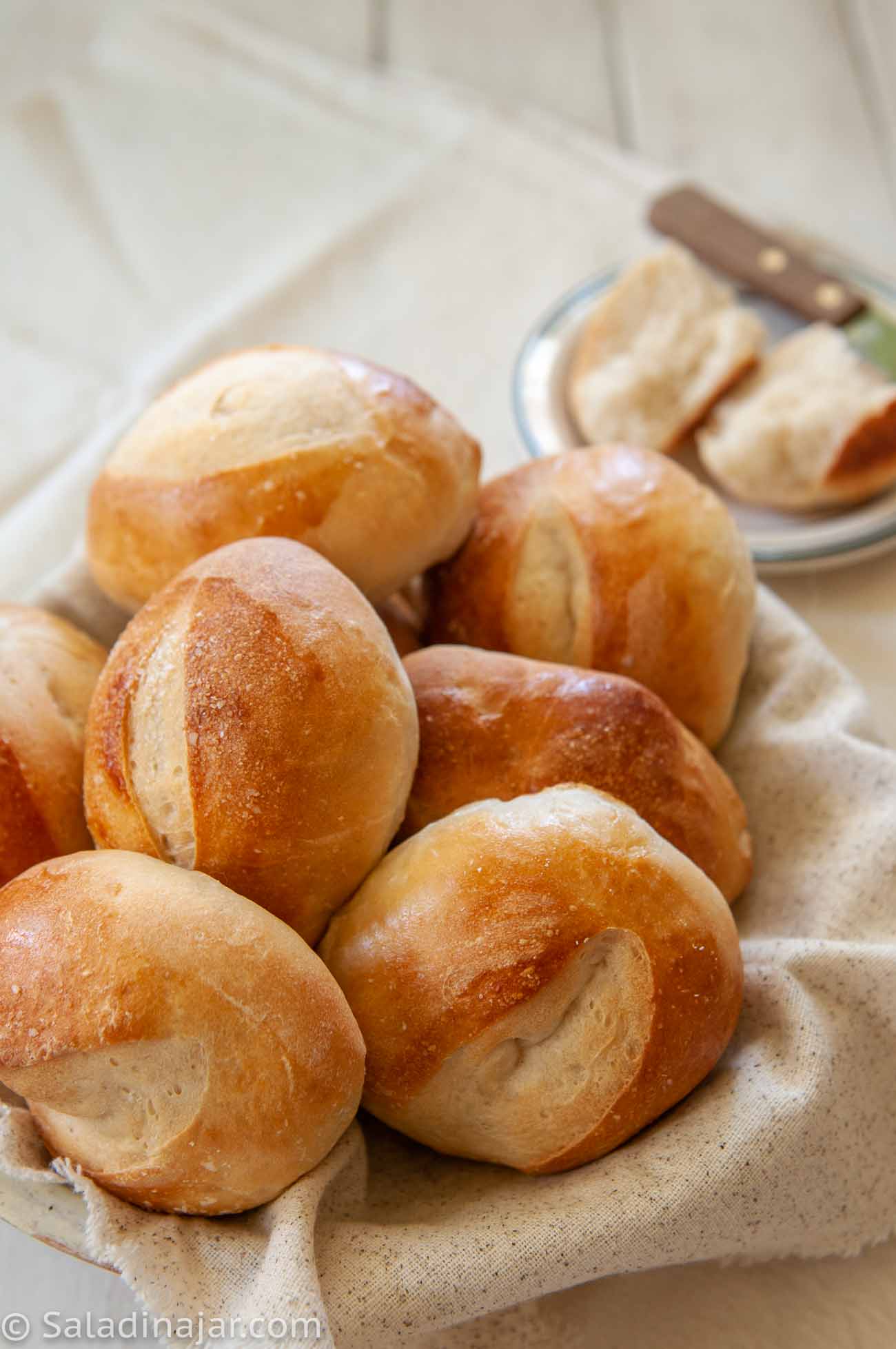
As an Amazon Associate, I earn from qualifying purchases.
After I gave my daughter-in-law a few of these sourdough rolls, she texted back, “Those rolls were so good. How do you resist?” The honest answer is, “I can’t.” Maybe I should say, “I don’t.” Do you know what I mean?
The texture of these homemade sourdough bread rolls is soft and chewy with a close crumb, a beautiful crust, and a cute “mini-ear.” Depending on your starter, you can taste the sourness in the best possible way.
Heads-Up: Working with a sourdough starter requires time and patience. Previous experience with making bread helps.
No worries if you don’t have a bread machine. See the recipe notes for directions on using a stand mixer or mixing by hand.
Happy Bakers Speak Up
“These were absolutely terrific! … Can’t wait to try them again!” –KATHERINE B.
Recipe inspiration:
This website’s most popular bread recipe is Crusty French Bread, probably because it’s easy and turns out great for almost everybody. (Nothing is 100%.)
When I learned sourdough could be substituted in many bread recipes, I tried swapping a cup of starter for part of the liquid and flour in the original French bread recipe. It worked.
It’s All About the Starter
Do you already have a sourdough starter in your fridge? If so, you can use it in this recipe.
If not, no problem. Learn how to make a robust starter with yogurt whey and flour in this post.
Can I Use a Different Starter in This Recipe?
Yes. Any active and alive sourdough starter should work. Because no two starters are alike, I’ll show you how to adjust the recipe on the fly.
Starters can be thick or thin depending on the ratio of flour to water used to maintain it. Some people use equal amounts of water and flour. Others use twice as much flour as water. Then there are those who don’t measure at all. You can see how writing a precise bread recipe with a starter in it is nearly impossible.
How To Adjust This Recipe for Your Specific Sourdough Starter
- Add all ingredients to the bread machine pan precisely as listed.
- Select the DOUGH cycle and stand by to watch the action.
- Observe how the dough is coming together after a couple of minutes of mixing. Is it dry and crumbly like biscuit dough before you add the liquid? or is it wet like cookie dough?
- If it’s dry, add one tablespoon of liquid at a time. Wait for the liquid to be absorbed before adding more. The dough should come together into a loose and raggedy ball.
- If the dough is too wet, add flour one tablespoon at a time. Allow time for the flour to be absorbed before adding more. You’re looking for it to form a loose and raggedy ball.
- Check the dough 10-15 minutes later. The dough should stick to the side and pull away cleanly.
- Adjust again with water or flour until the dough sticks to the side and pulls away cleanly. You can see more pictures of this process in the post about the most important thing you should do when using a bread machine.
Ingredients and Substitutions
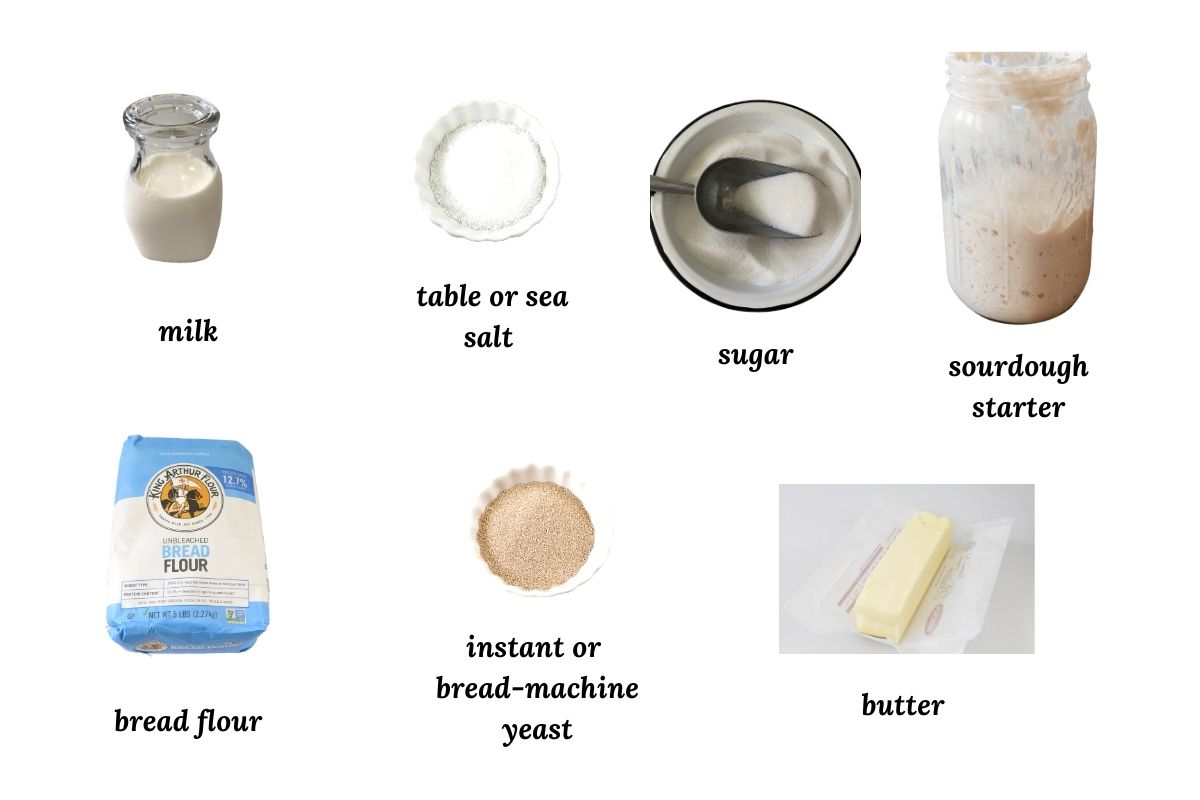
- MILK: I use 2% milk because that’s what I have on hand. Use whatever you have.
- SUGAR: You could substitute honey, but I have only tested it with granulated sugar. Sugar gives yeast energy for the work ahead.
- SALT: Use table salt or sea salt. If using Kosher salt, add at least 1/4 teaspoon more.
- BUTTER: Melt the butter, but let it cool down before you add it to the other ingredients.
- SOURDOUGH STARTER: This is the wild card on this list. There are many varieties, consistencies, and levels of sourness. You will most likely have to adjust for dryness or too much moisture after you start to mix the dough.
- BREAD FLOUR: Use bread flour for maximum chewiness and a good rise. All-purpose flour will not give you the same texture because it contains less protein. You could add a small amount of Vital wheat gluten to all-purpose flour in a pinch. Follow the directions on the package.
- BREAD MACHINE OR INSTANT YEAST: Do you make bread often? I recommend you buy instant yeast instead of active dry yeast. It’s easier and works faster. Active dry yeast will work, but it’s slower to get started.
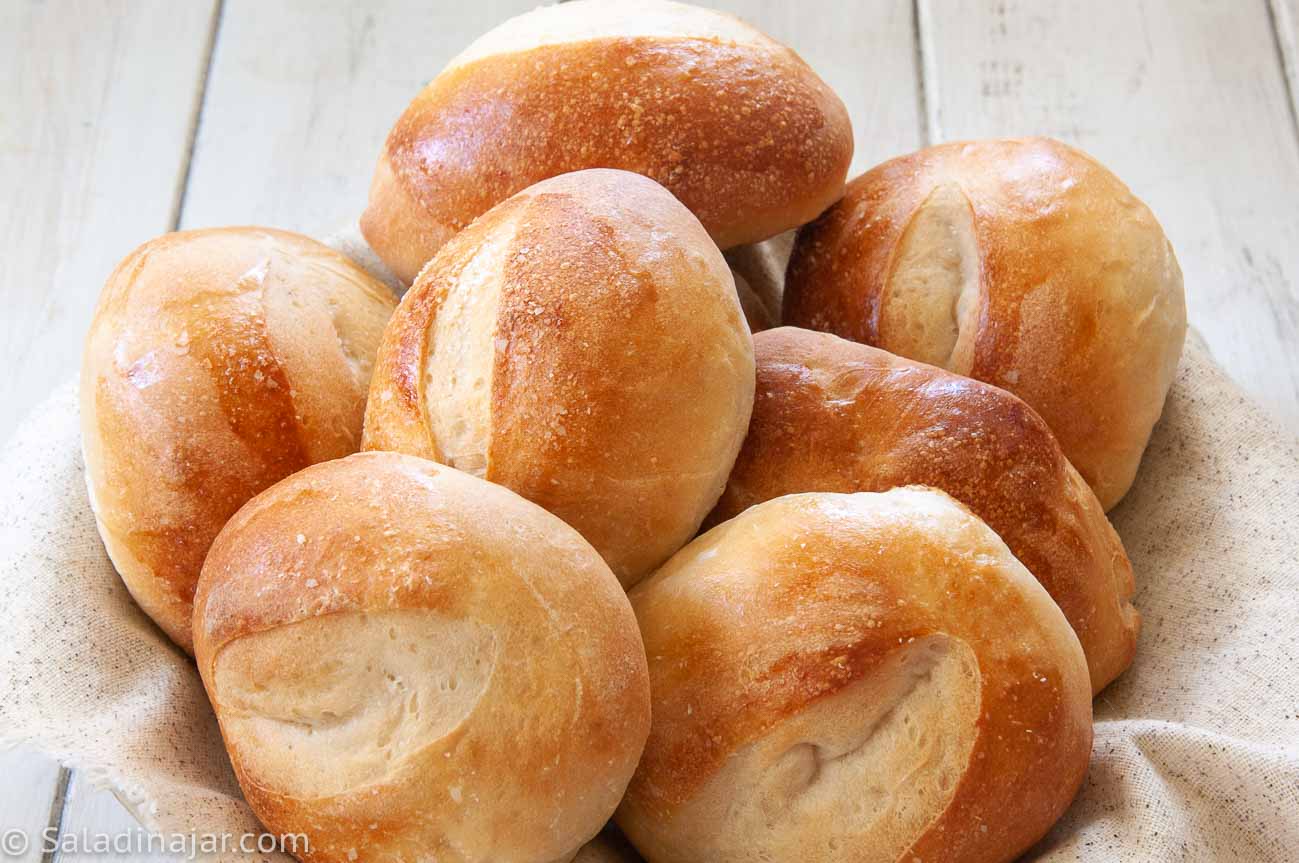
Variations
Sourdough Dinner Rolls with Toasted Onion and Poppy Seeds

Add 1-1/2 tablespoons of toasted, dehydrated onion to the dough when you hear the signal for add-ons. Continue the recipe as directed. After glazing the rolls, don’t slash. Sprinkle with poppy seeds. Bake.
Sourdough Loaf
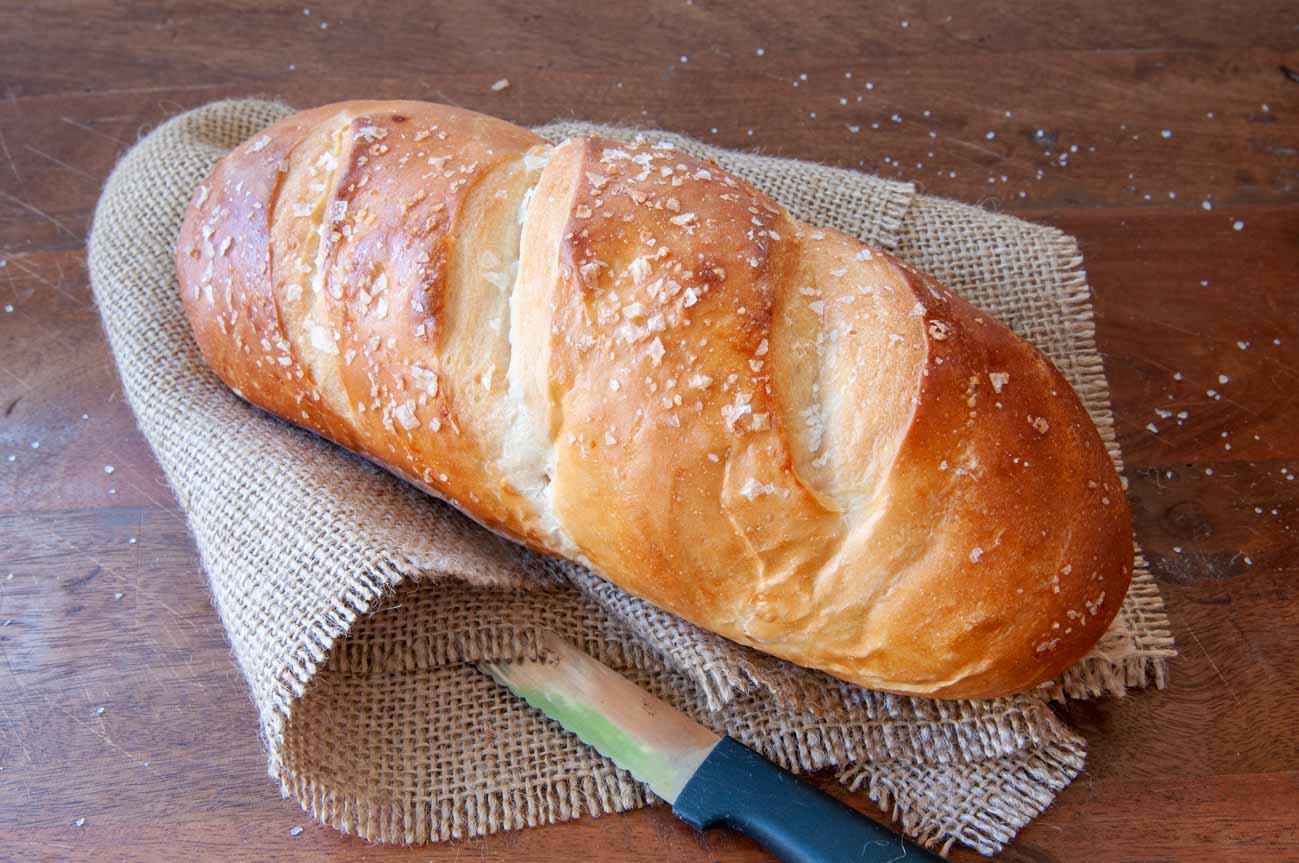
Make the recipe as specified. Press or roll the dough into a rectangular shape. Starting from the short end, roll tightly. Pinch the seam together. Turn ends under and seal. Place on a prepared baking sheet covered with a silicone mat, parchment paper, or spray oil.
Coat the loaf with glaze. Make three sharp diagonal cuts across the top. Sprinkle with coarse salt if desired. The recipe will make 2 loaves the size of the one in the picture or 1 large loaf.
Bake at 400˚F (200˚C) for 20-25 minutes, depending on the size of your loaf. Internal temperature should reach 200-210˚F (93-98˚C).
How To Make These Sourdough Rolls
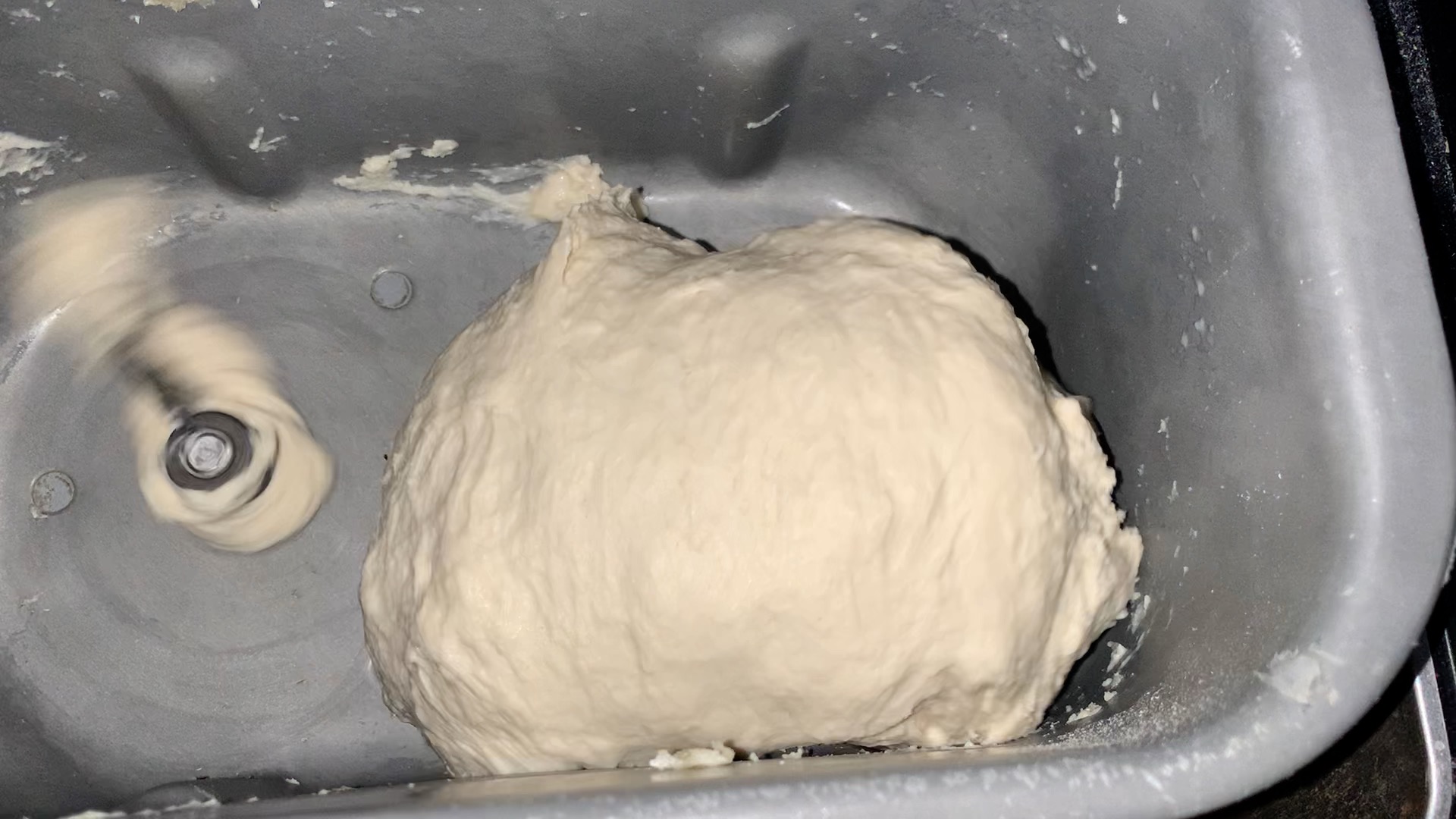
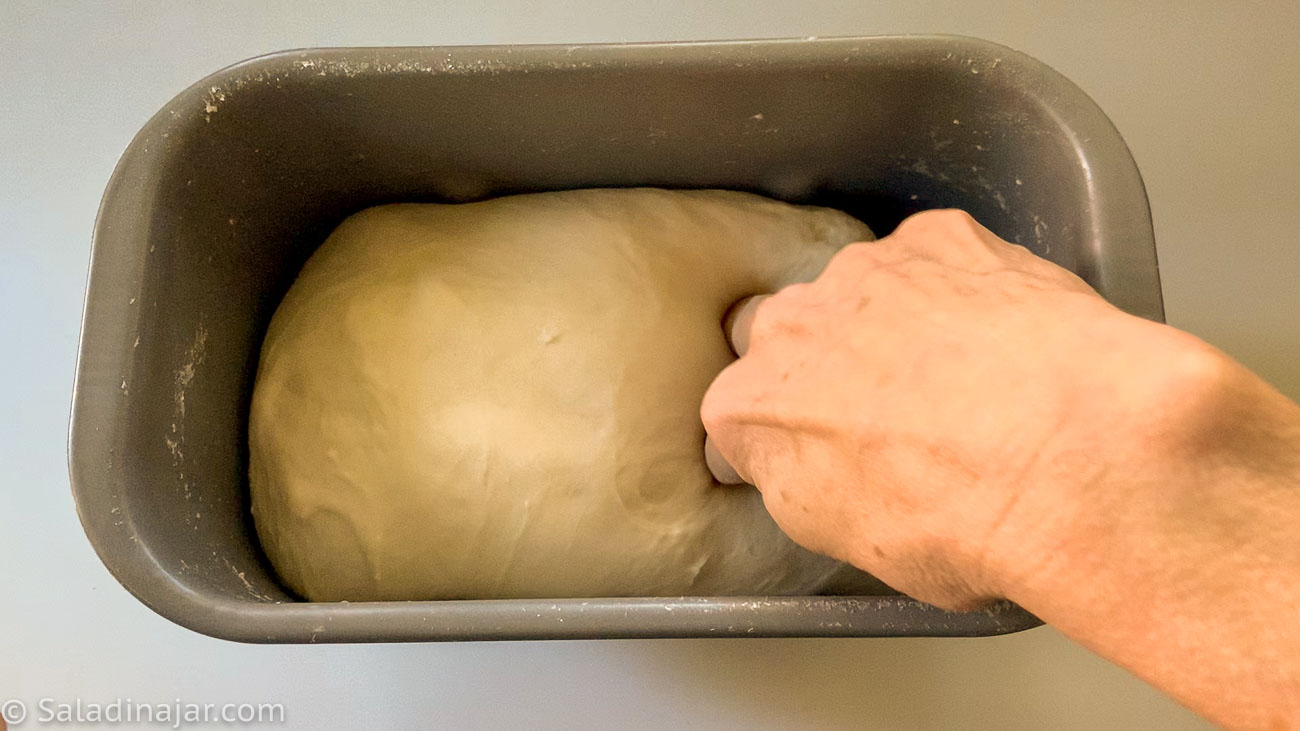
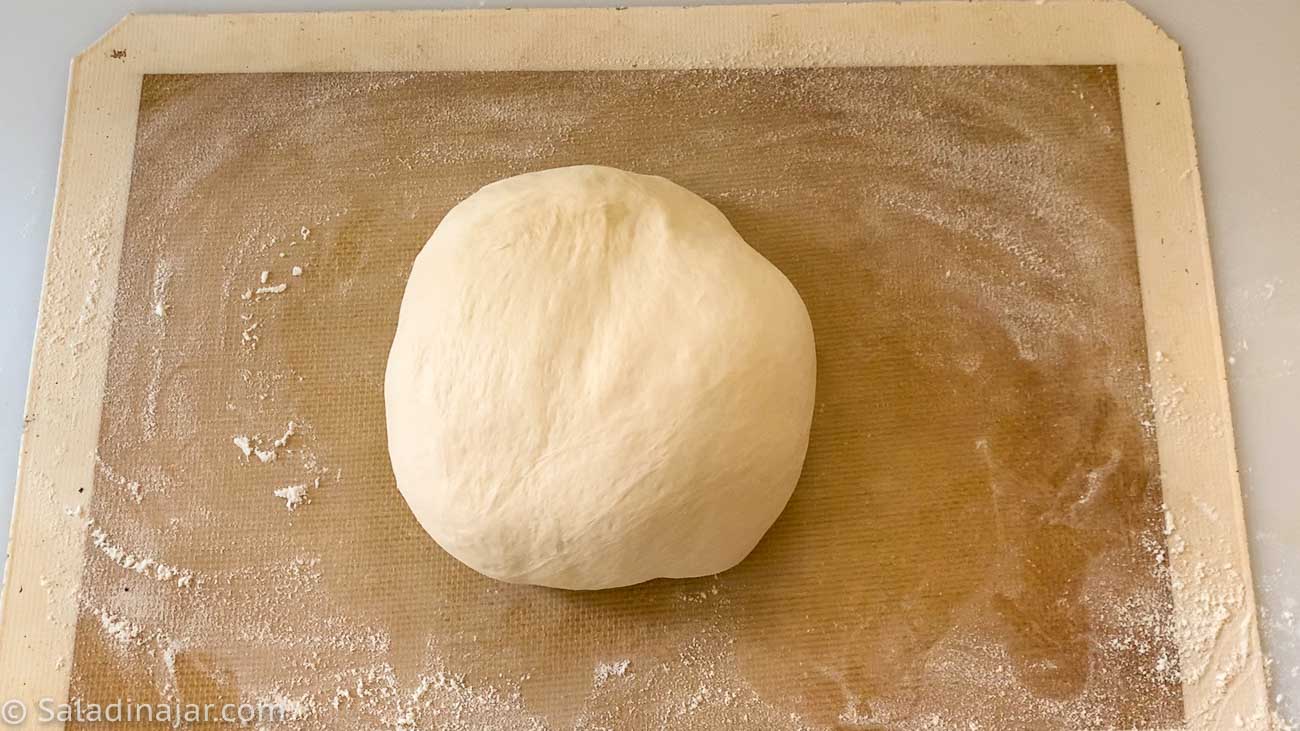
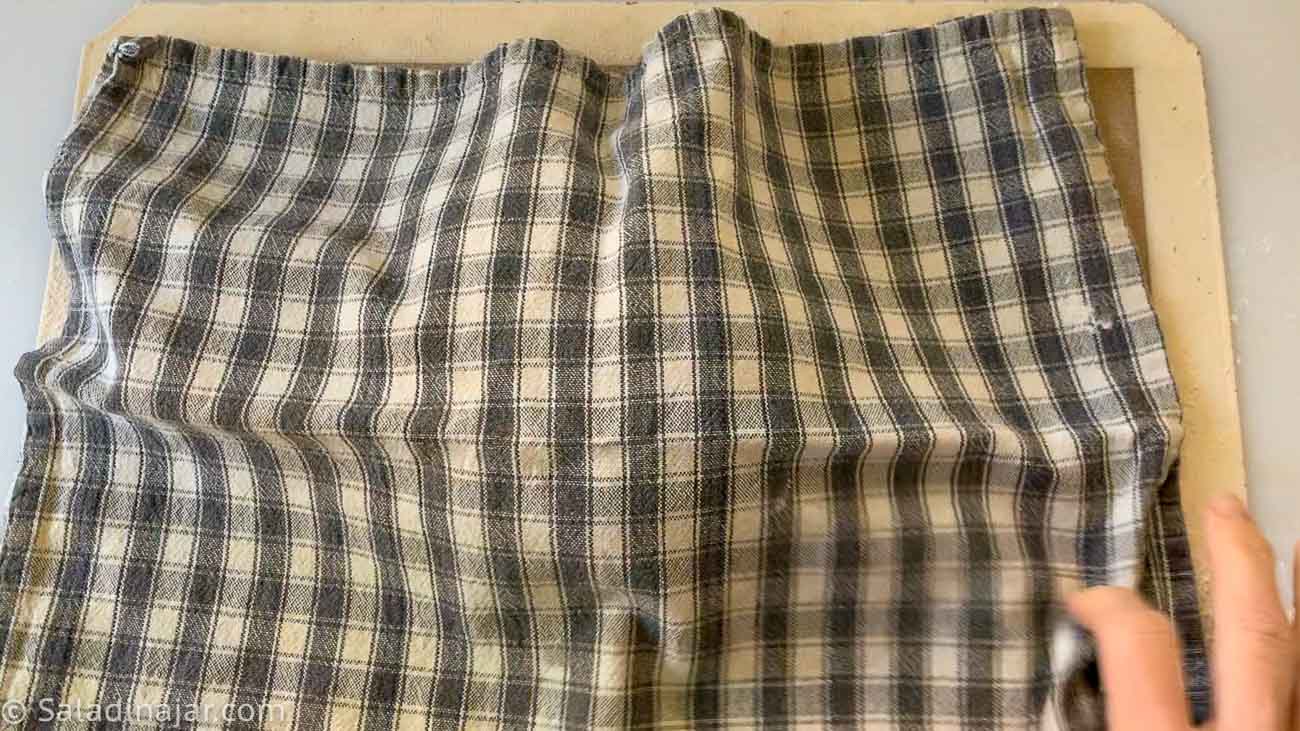
.
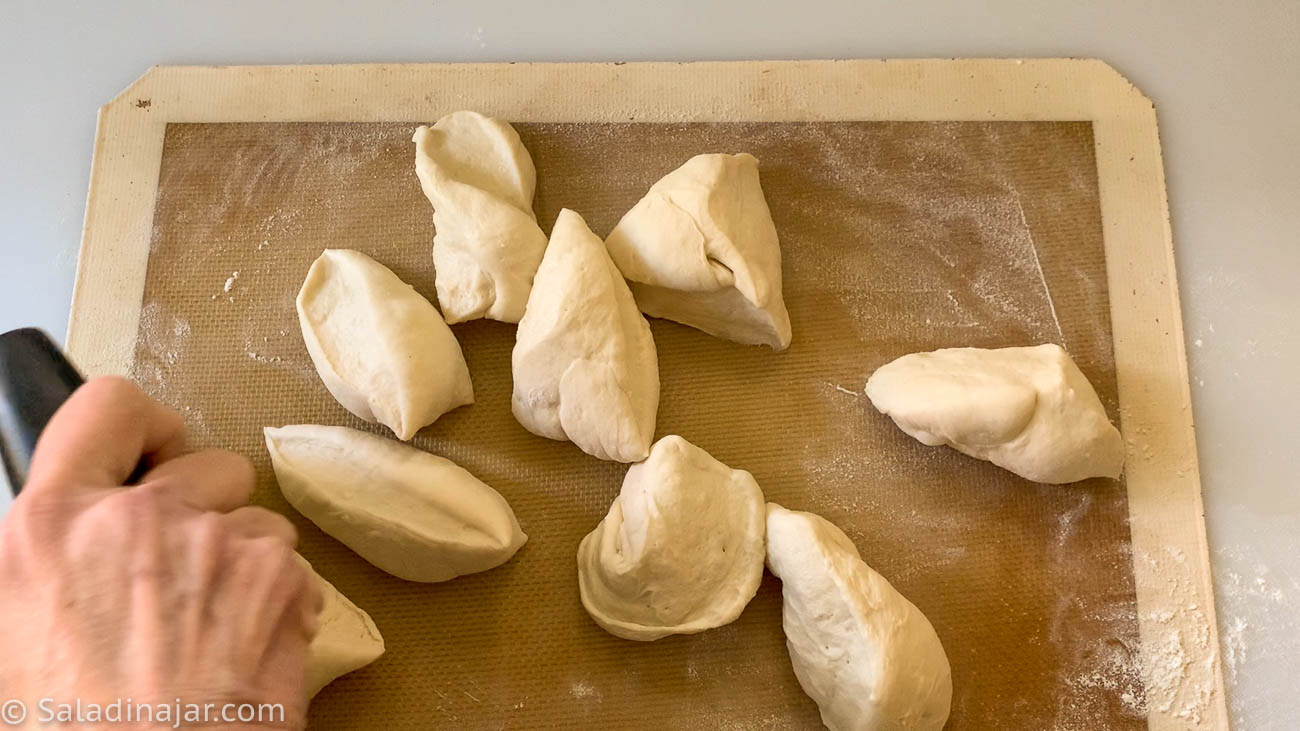
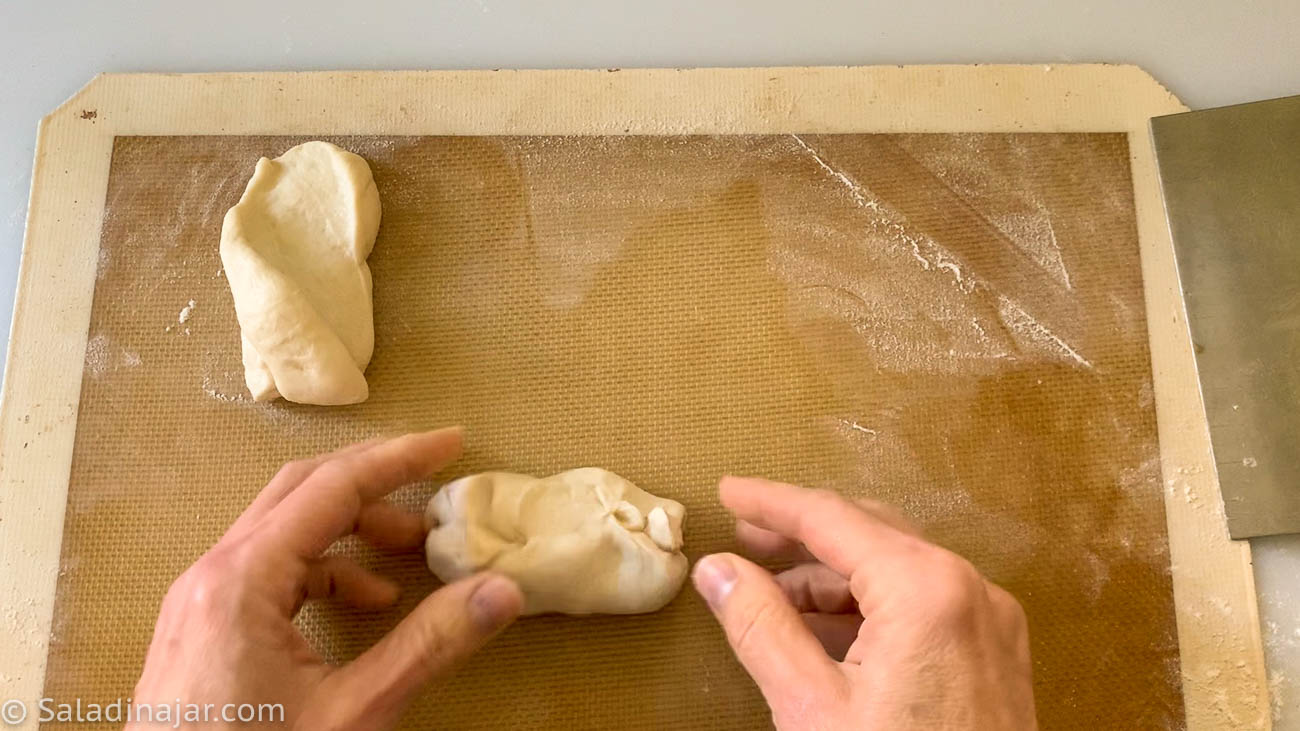
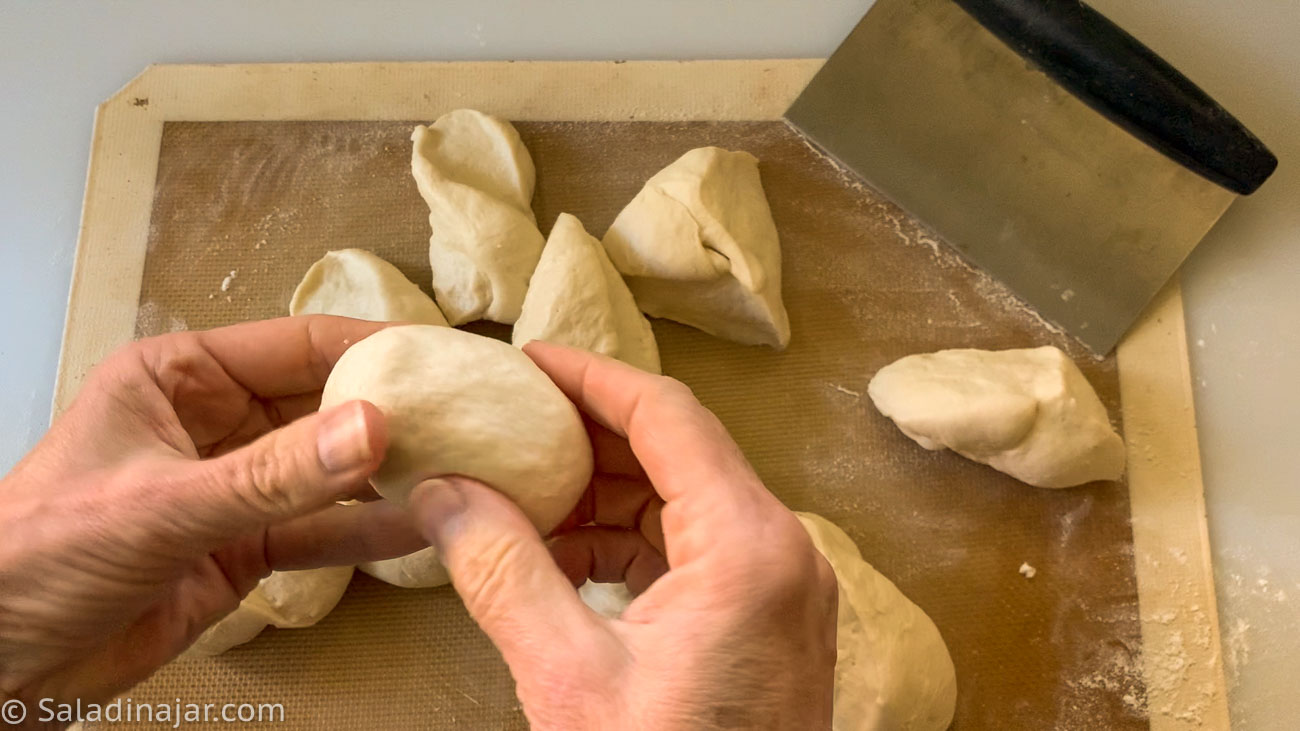
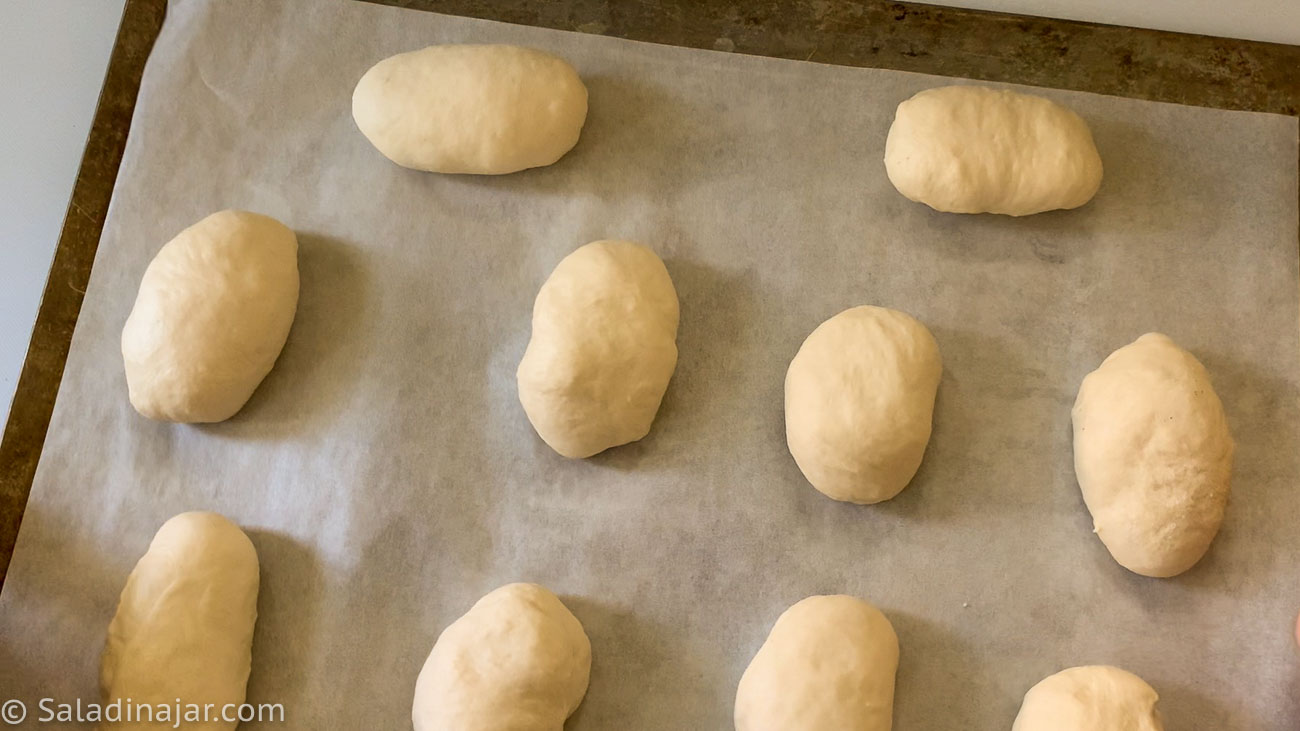
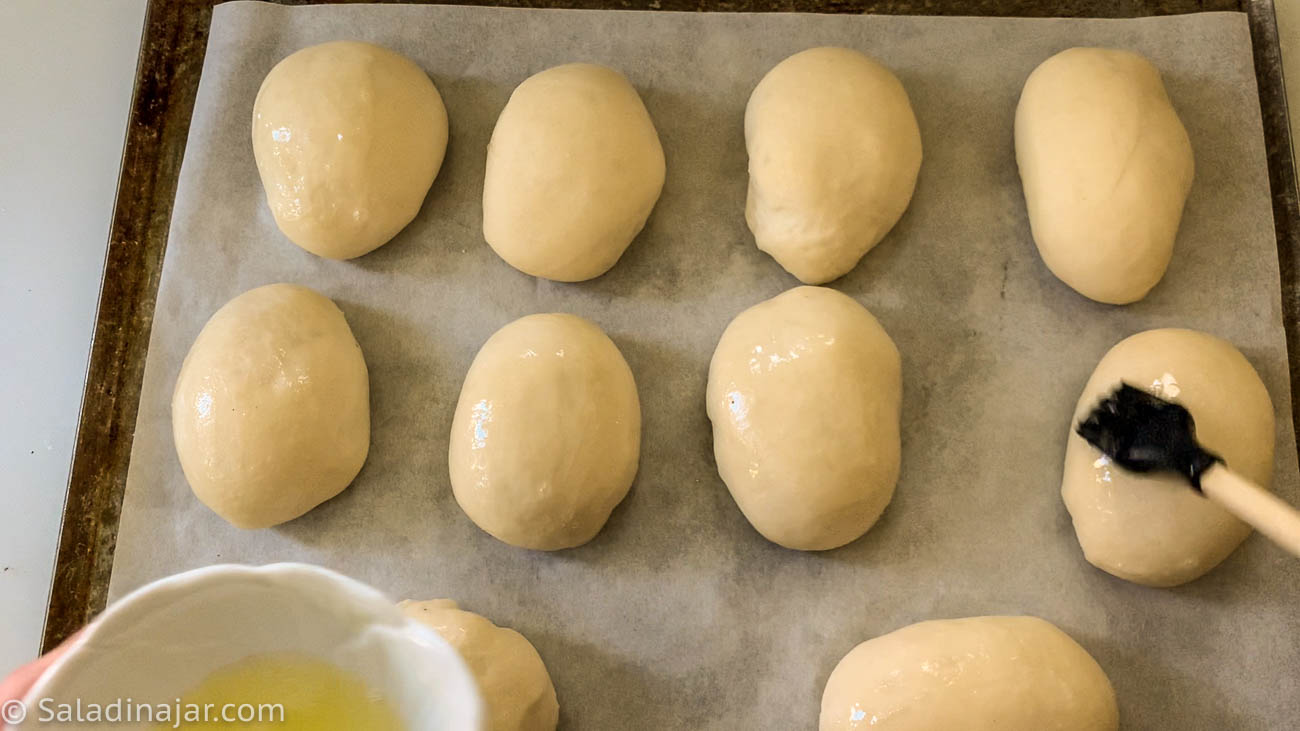
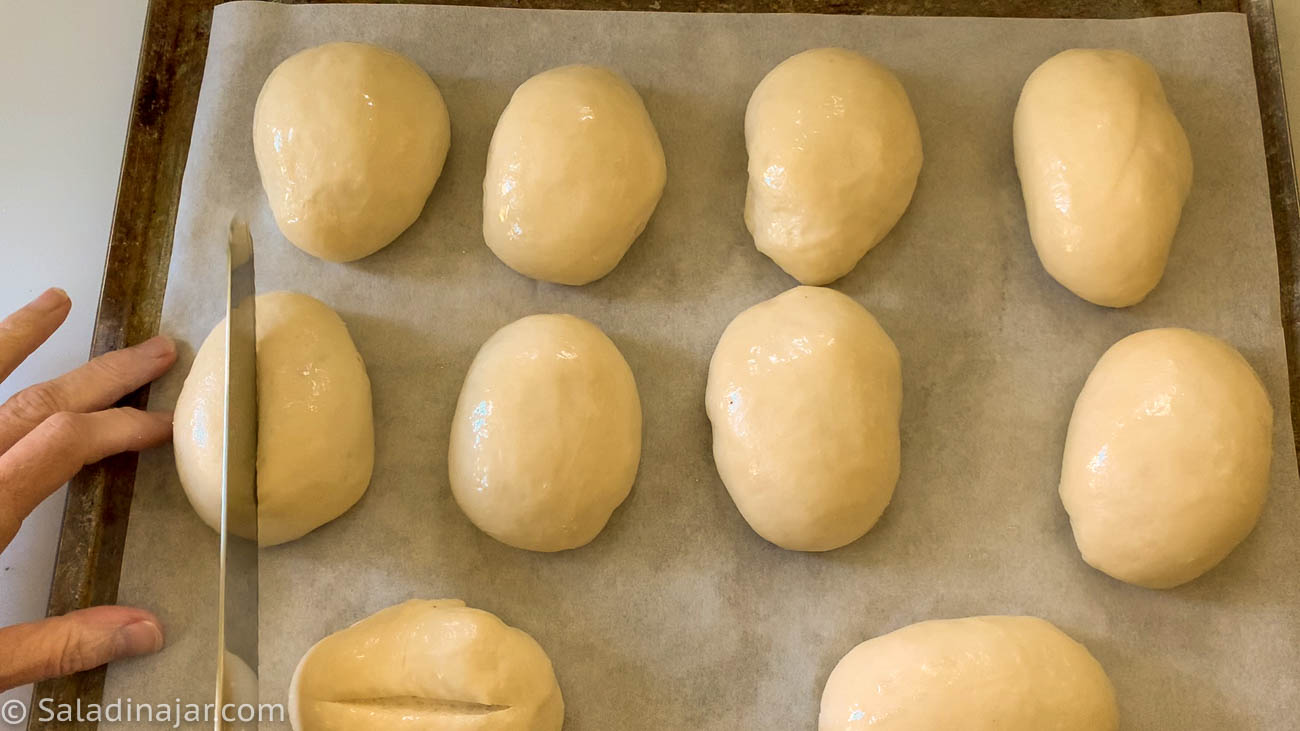
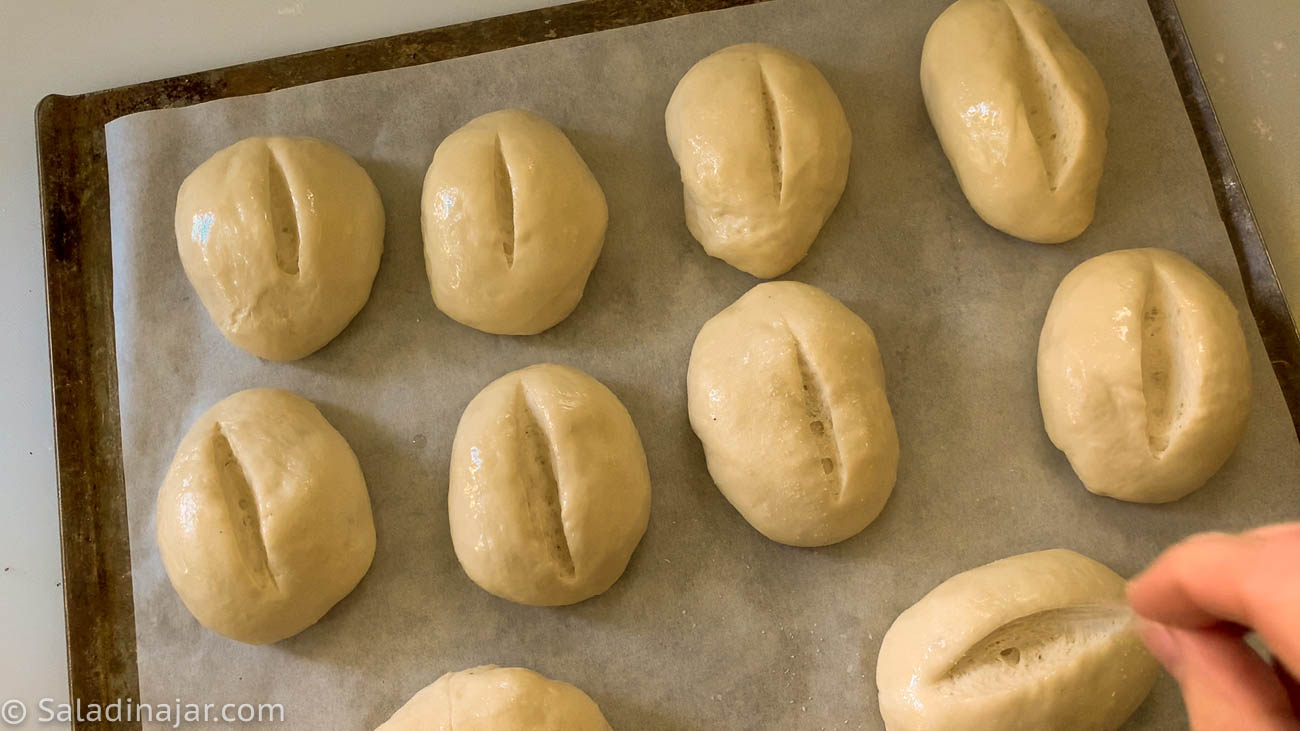
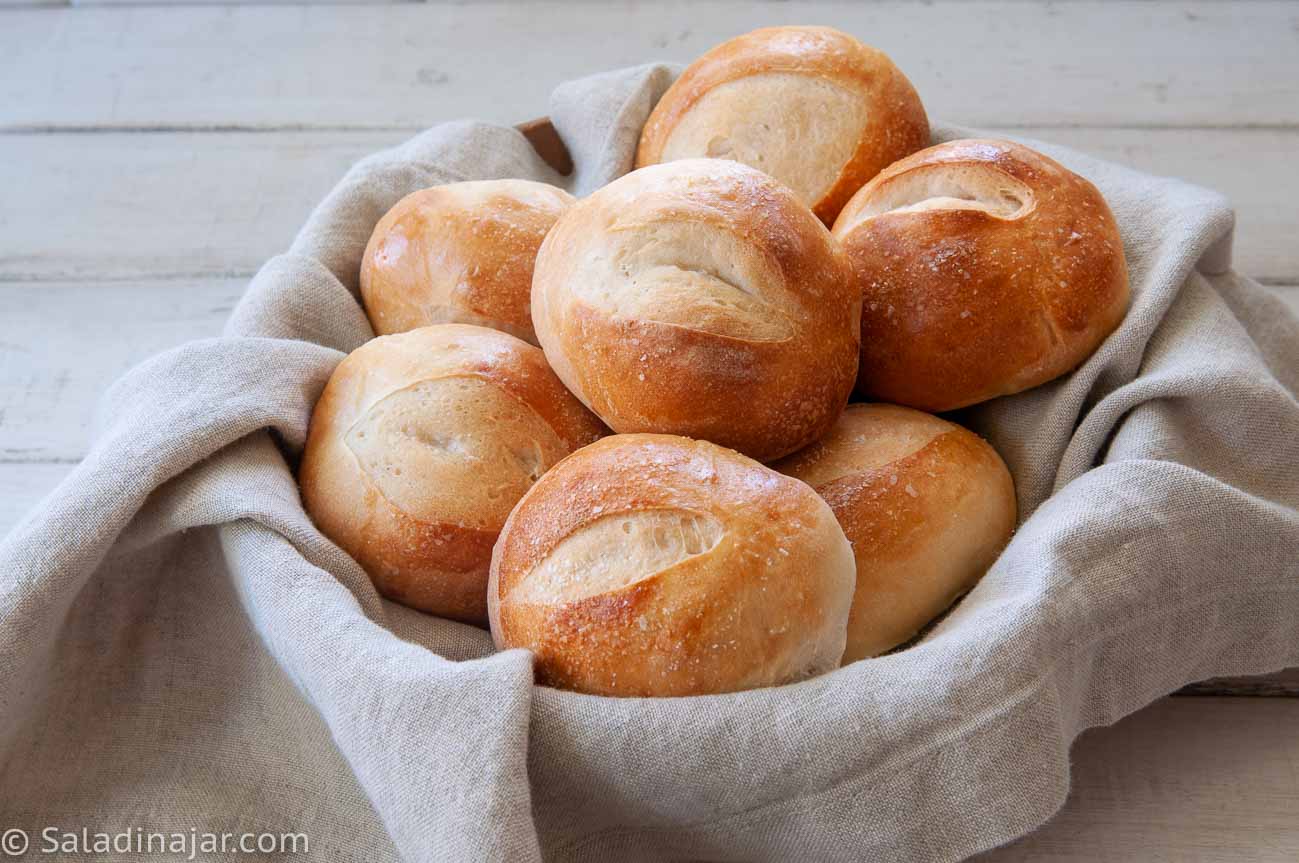
FAQ About These Sourdough Rolls
Can I make the dough ahead of time?
Make the dough the day before. After the first rise, push the dough down, cover, and refrigerate. The next day, shape the cold dough into rolls and give them extra time to rise until almost double. Bake as usual.
Can I freeze these rolls?
Yes. Wrap baked rolls in plastic wrap, then a plastic bag or foil. Always wrap the bread in double layers before freezing. Try to eat it within a month or two.
Can I make smaller rolls or larger rolls?
Yes. This recipe makes 10 rolls the way it’s written. Go bigger if you want to make hamburger buns. Make 6 or 8 rolls instead. Go smaller (12-14 rolls) when serving a large dinner like Thanksgiving.
Would this be a good recipe for making a soup bowl?
Oh yes. The crust is sturdy, and the bread is perfect for soaking up the soup. You can see directions for cutting and making soup bowls with bread here.
How long will sourdough rolls made with a starter stay fresh?
Using a sourdough starter keeps sourdough fresh for 2-3 days. This is a big deal to home bakers that don’t normally use preservatives in the dough.
Why are my rolls dense?
There are many answers to this common complaint in the world of homemade bread. See this post about the reasons for dense bread for more details.
The most common reasons for dense bread with this recipe:
- Did you allow extra time for the dough to rise after the DOUGH cycle finished? At my house, it usually takes another 45 minutes to 1 hour in addition to the rising time allowed in the DOUGH cycle.
Depending on the temperature in your house, the second rise can also take longer than an hour, sometimes 2 hours. Don’t go by the clock. Look for the size to almost double. This is a slow-rising bread, which leads to better flavor. - What did the dough look like when it was almost finished kneading? It should stick to the side, then pull away cleanly. If the dough won’t stick, it is probably too dry.
- Was your sourdough starter fully bubbly? A spoonful should float in water when it is ready.
Parting thoughts: Looking for a Sourdough Sandwich Bread you can make with your bread machine? Try this Sourdough Bread Machine Sandwich Loaf or this one: Sourdough Bread Machine Recipe – No Yeast
What To Serve with These Rolls
- Cajun Chicken Fricassee with Mushrooms
- Scooter’s Baked Spaghetti with Cream Cheese: Guaranteed to Please
- Leftover Steak Soup
- Chicken and Smoked Sausage Gumbo
Recipe Help at Your Fingertips: For questions or suggestions, email Paula at saladinajar.com. If you need help, I’m happy to troubleshoot via email (faster than leaving a comment). Attach pictures and as many details as possible for the best advice.
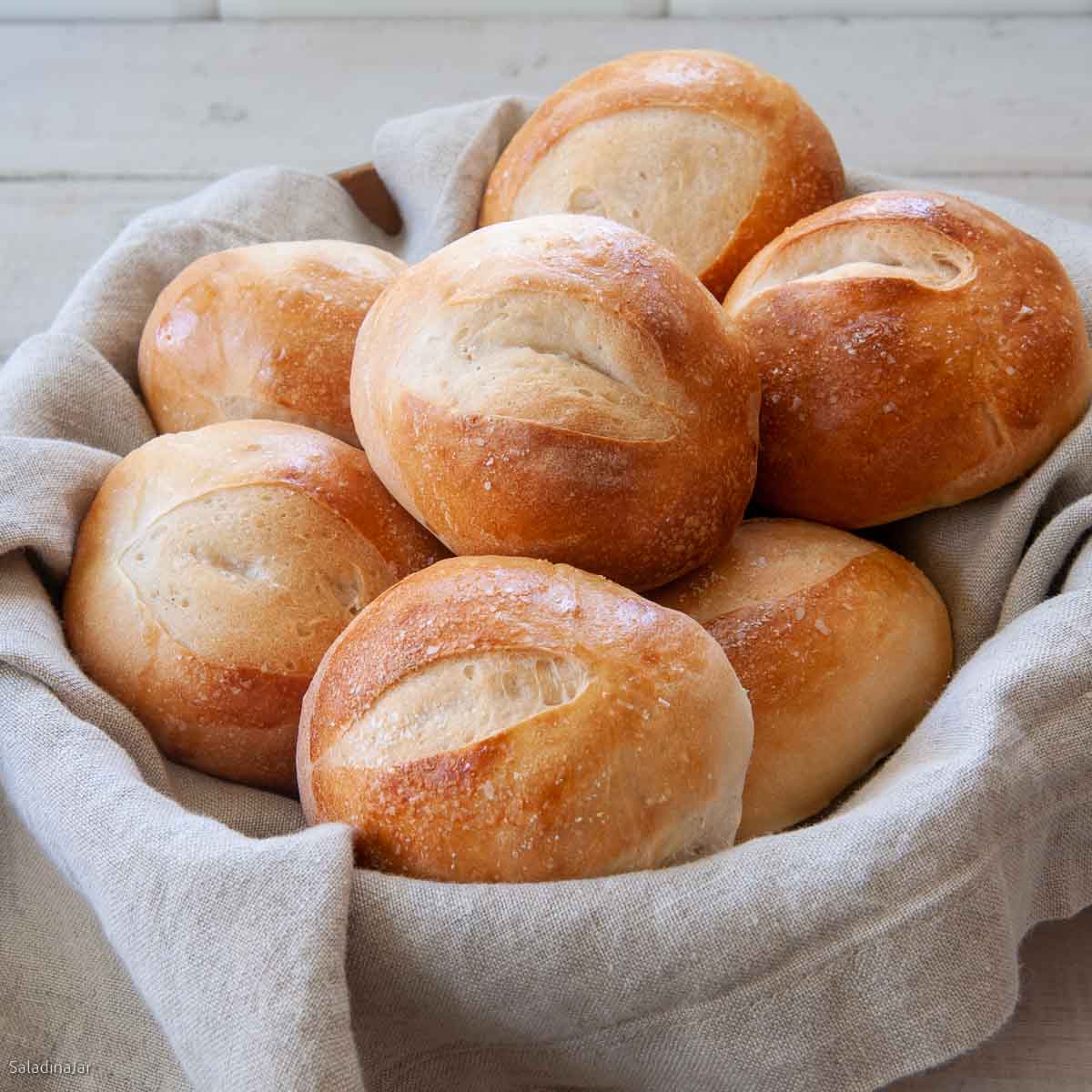
Chewy Sourdough Dinner Roll Recipe with a Bread Machine
Rate this recipe
(5 stars if you loved it)
Video
Ingredients
- ½ cup (114 g) milk cool
- 1 tablespoon granulated sugar
- 1 ½ teaspoon table salt
- 1 tablespoon butter chopped
- 1 cup bubbly sourdough starter
- 2 cups (240 g) bread flour (depending on your starter, you may need more or less–start with 1 3/4 cup)
- 1 teaspoon instant or bread machine yeast
Glaze
- 1 (30 g) egg white
- 1 teaspoon water
Instructions
- Add all ingredients to the bread machine pan in the order given: 1/2 cup (114 g) milk , 1 tablespoon granulated sugar, 1 1/2 teaspoon (1 ½ teaspoon) table salt, 1 tablespoon butter, 1 cup bubbly sourdough starter, 2 cups (240 g) bread flour , and 1 teaspoon instant or bread machine yeast. Select the DOUGH cycle and start.Note: This recipe will work with any sourdough starter that is alive, strong, and active.
- Check the dough after a couple of minutes to make sure the dough is coming together into a raggedy ball. If not, add more water 1 tablespoon at a time.
- Check dough again after about 15 minutes. The dough should stick to the sides of the pan, then pull away cleanly. If too wet, add flour 1 tablespoon at a time. If too dry and the dough doesn’t stick at all, add more liquid.
- When the dough cycle finishes, leave it in the machine until the dough has doubled in size. If the ambient temperature is cool, consider moving the bread machine to a warmer location. My dough usually takes another 30-90 minutes to rise correctly.
- Remove the dough from the bread machine pan to a floured surface. Shape into one large ball and cover with a towel for a 10-15 minute rest.
- Uncover the dough ball and divide the dough into 10 equally-sized balls. Make into oval shapes like an egg. See the video for shaping instructions. Place each roll onto a heavy cookie sheet covered with a silicone mat or parchment paper.
- Cover the rolls and allow to rise again until almost double in size. Halfway through, preheat the oven to 375˚F (190˚C)..
- Before baking rolls, whisk 1 (30 g) egg white and 1 teaspoon water together to make a glaze. Use a small brush to cover each roll with glaze. Slash the tops with a sharp serrated knife or a straight edge razor blade.
- Place in a preheated oven on the middle rack.Bake the rolls for 18-20 minutes until evenly browned or the internal temperature reaches 190-200˚F (88-93˚C). Remove from the baking sheet to a cooling rack immediately.
Notes
Alternate Mixing Instructions:
Directions for making bread with a stand mixer or by hand:
- To make this recipe in a heavy-duty stand mixer, add ingredients to the bowl in the same order. Turn on low to mix until all ingredients are moistened. Using a dough hook, turn speed to 2 or 3 and continue beating/kneading until dough becomes smooth and elastic (about 5-10 minutes). Cover and allow to rise in a warm place. Deflate dough gently and shape as indicated in the recipe.
- If making by hand, combine all ingredients into a shaggy ball in a large bowl. Turn dough out onto a floured surface and knead with your hands until dough becomes smooth and elastic, a process that will likely take 10-20 minutes depending on your experience. Place the dough ball into a greased bowl. Cover and allow to rise until double. Deflate dough gently and shape as indicated in the recipe.
- Please note: You can substitute active dry yeast for instant or bread machine yeast. There is no longer any need to dissolve it according to King Arthur Baking.com. (https://www.kingarthurbaking.com/blog/2015/09/25/active-dry-yeast) Be aware that it may be a little slower acting than instant yeast, but it’ll get there.
Nutrition
All images and text ©️ Paula Rhodes for Salad in a Jar.com

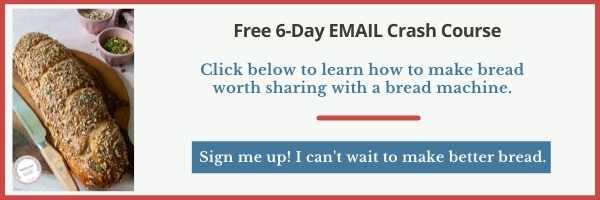

Paula Rhodes, owner
As a retired home economist, I created Saladinajar.com to share my belief that you don’t have to be a chef to find joy in creating homemade food worth sharing. Bread machines (used in an unconventional way), homemade yogurt, and quick microwave recipes are my specialty.